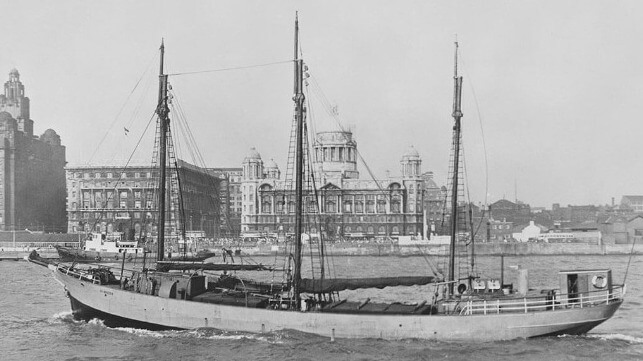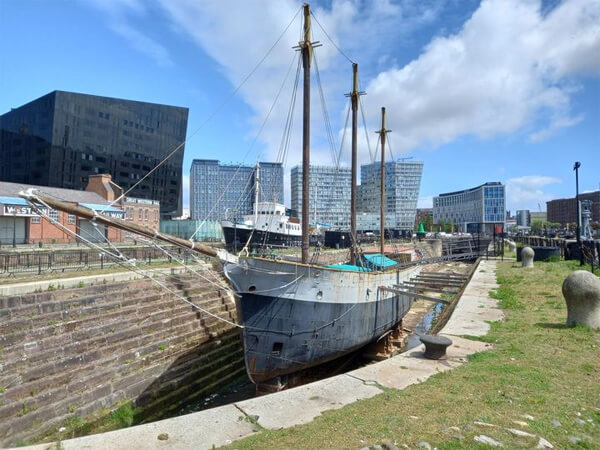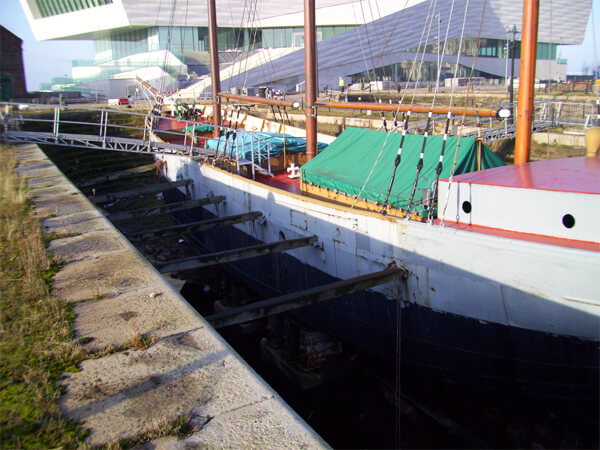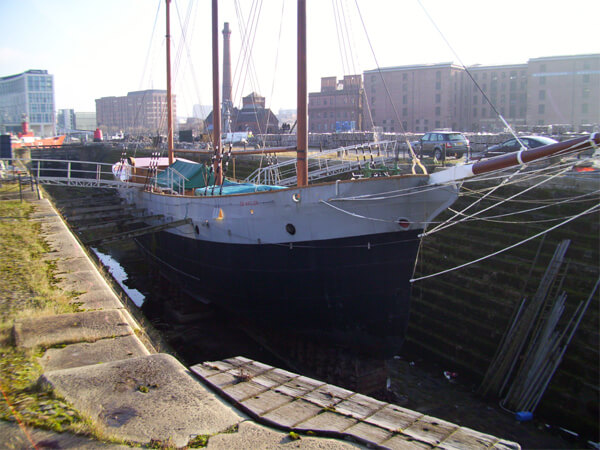Historic 1917 Irish Sea Schooner to be Scrapped
National Museums of Liverpool says the ship is unsustainable and disposal by transfer is not a realistic option

A historic three-master auxiliary schooner built to take advantage of the short-sea trading opportunities that emerged during World War I and best known for 40 years of service on the Irish Sea is going to be dismantled after the National Museums of Liverpool, England decided the cost of restoration and maintenance is unsustainable.
“National Museums Liverpool’s Board of Trustees has approved the recording and disposal by deconstruction of De Wadden,” the museum announced on May 3 after a year-long consultation and feasibility study. The museum reports it consulted with a broad group including local heritage organizations and also offered the vessel for transfer to other museums. While it received several expressions of interest from individuals and organizations, the National Museums has determined none of the responses were “compliant” with the terms. The board concluded that transfer was not a realistic option and that dismantling is the only option.
Built in 1917 in the Netherlands, the museum had previously reported that the primary significance of the De Wadden is as an example of an Irish Sea trading vessel. The museum had previously been undertaking efforts to reverse later alterations and restore her to look as she did sailing on the Irish Sea between 1922 and 1961.

De Wadden has been on display since 1987 in a Liverpool drydock (National Museums of Liverpool)
Measuring 116 feet in length with a steel hull and a single deck, she was built along with two sister ships to take advantage of the very lucrative trading conditions created by Dutch neutrality in the First World War. She operated in the European short-sea trades till the early 1920s.
Sold to an Irish businessman in 1922, De Wadden would spend the next 39 years carrying bulk cargoes such as grain, china clay, mineral ores, and especially coal from Liverpool and the River Mersey area to various Irish ports. During the Second World War, she provided a vital lifeline carrying supplies to Ireland.
While the vessel had a small motor she almost always operated under a combination of sail and motor. As a motor schooner, she had a flat bottom and shallow draft that maximized cargo capacity and gave her the ability to enter small harbors. The design required the push of the motor because the hull shape does not sail very well, but with the motor which gave her an original speed of five knots, she was a versatile and economical cargo ship.
De Wadden has a very practical design including wide hatches which facilitated the loading and discharge of cargo. She carried a motor winch in the forward deckhouse to allow the cargo to be handled without extensive shoreside facilities. Her crew consisted of only five men and a boy, and especially important during World War II since she could sail, a qualified marine engineer was not required.
By the early 1960s, she was no longer practical and was replaced by a modern motor coaster. De Wadden was sold and went to Scotland where her role for the next 20 years ranged from carrying sand to transporting fishing parties.
The vessel was acquired in 1984 by the Merseyside Maritime Museum and placed in the Canning Graving Docks drydock in 1987 where she remains. Some restoration and conservation efforts were undertaken and they determined she had maintained a quite high level of originality and was predominately sound. The wooden cabins were showing some loss through rot and have been removed and placed into storage. Briefly in the 1990s the museum ran tours and educational sessions but later closed the ship for planned further conversation work.

Exposed to the weather and other conditions, the museum said it became increasingly necessary to think about the long-term future for De Wadden. A feasibility study was undertaken and according to the museum’s board demonstrated the costs of repairing the vessel and continual maintenance was “unsustainable.” The board agreed to deaccession the ship in October 2022 and offer her for transfer or deconstruction.
“It is very disappointing that no alternative solution has been found for De Wadden and she will now sadly be lost from the Liverpool waterfront,” said Hannah Cunliffe, Director of National Historic Ships UK, after the announcement of the board’s decision. “However, I’m pleased that National Museums Liverpool will be working to our guidelines to ensure she is fully recorded and deconstructed in such a way that significant parts can be kept or re-homed, and her story continue being told.”

A team is now reviewing various options to record the vessel before the deconstruction begins. They are also reviewing what elements of De Wadden might be suitable to retain as part of the Maritime Museum’s collection or for other potential use.
“Disposal is an essential part of a healthy collections management, but these decisions are not always easy and we know not everyone will agree,” the museum said in its statement. “We do understand there may be people who may find this decision around De Wadden, upsetting.”
The museum is soliciting oral histories and recollections that could be used to help preserve the ship’s legacy in Liverpool’s maritime history. The current plan calls for the deconstruction to proceed toward the end of 2023 and elements not saved for future use will be recycled.
The opinions expressed herein are the author's and not necessarily those of The Maritime Executive.
